English | Dutch |
|
| The Yucatan Peninsula has something for everyone | |
Campeche (Mexico), January 2nd 2017
|
|
| |
|
A long-haired, tattooed backpacker is walking on the sidewalk along the main road of Tulum. The centre of Tulum seems to exist of only one street; a busy main road flanked on both sides by hotels, restaurants, travel agencies, and dive shops which earn their money from the tourists that flock their town. The east coast of the Yucatan peninsula between Cancun and Tulum is the Costa Brava of North America. Not very surprising since there is a complete mix of beautiful beaches, great diving destinations and "cenotes" (natural swimming ponds, often in caves). Additionally, you can also visit famous archaeological sites within an easy daytrip from the coast; but luckily (for some) this is not mandatory. We overheard a conversation while drinking coffee on a terrace. A girl told her companion that she was in Mexico already for four weeks. Her companion asked where she had been during those weeks. With a frowning face she responded: "Tulum. The only place in Mexico where I am interested in is Tulum." Tulum is in many respects a copy of typical backpacker meccas that can be found all over the world. Often, the popularity of these places began in hippy era, when the hippies descended on beautiful places where they were hospitably received by the locals. Some hippies ended up staying and began hip companies: vegan restaurants, yoga schools, coffee shops where you can lounge on beanbags and campsites where you can rent a bed for a reasonable price in one of the safari tents on the beach. The beautiful beaches or temple complexes that initially attracted travellers to these places, are no longer the main reason to come here. It is about the "vibe". Whether the place is in Mexico or India, makes little difference. |
|
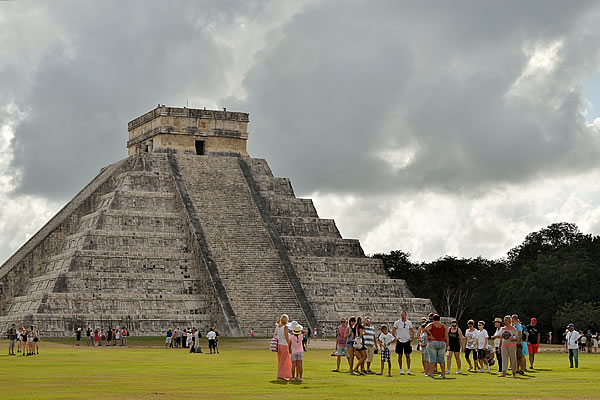 |
|
Chichen Itza, one of Mexico's major Maya sites |
|
Also if you are not looking for the "vibe" the Yucatan Peninsula is a great travel destination. In addition to a huge variety of sights to see and activities to do, you can choose and vary between mass tourism, backpackers mecca's and pieces of authentic Mexico. The nice thing is that those varieties are close together. Cancun, for example, has a 25 kilometre long sandy beach where beautiful hotels stand side-by-side. In this area, the nightclubs as exciting as you would expect them to be in Las Vegas. However, if you go in downtown Cancun off the main road, you come into a more common part of Mexico. Here you will find restaurants that cater mainly for the local Mexicans and not for the "extranjeros" (foreigner). Even better examples of tourist towns that do not feel like tourist traps are Valladolid and Campeche. Visitors use Valladolid as a base to visit the world famous temples of Chichen Itza, and they take a walk around the central square. The rest of the city, you only share with the locals. For Campeche the same applies. Tourists come for the beautifully restored old town, but if you go the hectic market which is just outside the old city walls, then you are in the ordinary Mexico. | |
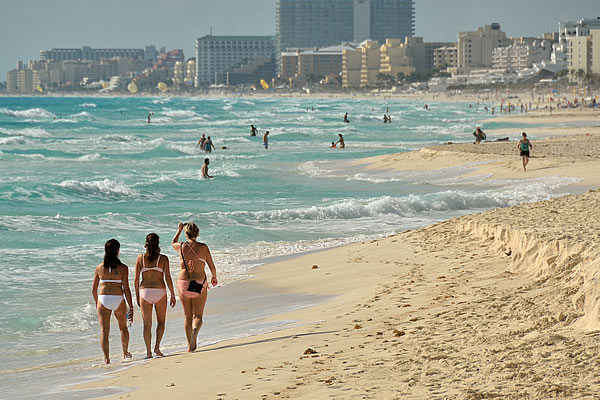 |
|
The powder-soft beach of Cancun |
|
Fortunately, the peninsula also has many places that nobody finds interesting enough to visit. For example, you only need to visit the provincial capital Felippe Carrillo Puerto and you're in a city where people nervously smile at the extranjeros who have managed to find their city. People ask curiously why you are there. Unfortunately, we have not started our Spanish course yet, so we make binoculars with our hands and we stammer "aves" (birds). That is something they understand, because this city is close to Reserva de la Biosfera Sian-Ka'an and the area is extremely rich in birdlife. It is also a city where the largest part of the population is Maya. Mayans from the surrounding area also come often to the city to see the "talking cross". In a small church with a roof of palm branches, there is a crucifix of which is said that it spoke to the Mayans to urge them to keep on fighting against the Spaniards. For contemporary Mayans it is mainly a symbol to reflect on the disadvantaged position of their population in Mexico. We are taken to the church and take off our shoes like the man does who accompanies us. While we examine the cross, the man nods and acknowledges: "This is an important place for the Mayans", after which he makes a short prayer. The weeks we spend on the Yucatan Peninsula, we are hopping from tourist magnets to less visited places. As in most countries, the local people in non-touristy areas are more eager to make contact, but what strikes us most is that the Mexicans are still friendly everywhere. Even if you refuse an offer from a vendor along the busiest tourist street, this is accepted without grumbling. We would therefore dare to recommend the peninsula to everyone. Would you like spending your holiday being pampered in a luxury resort, hanging around in a hammock with other travellers or do you want to observe Mexican life from a bench on the city plaza: the Yucatan Peninsula has something for everyone. |
|
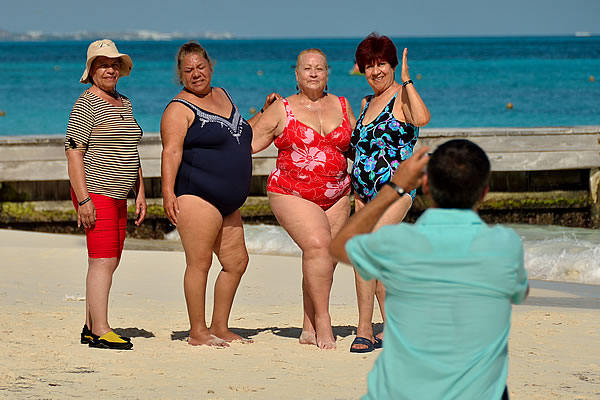 |
|
Say Cheeeese! |
|
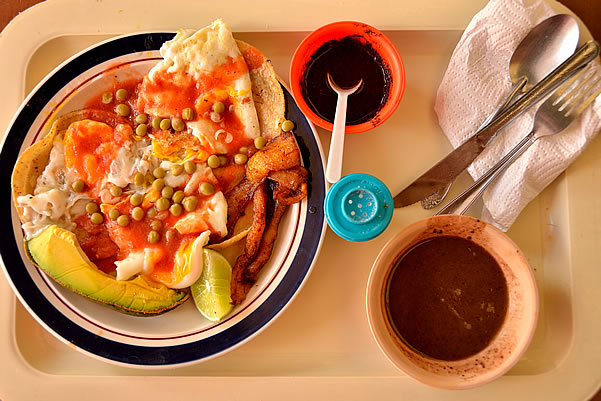 |
|
Huevos Rancheros (egg on tortilla), one of Mexico's most popular breakfast |
|
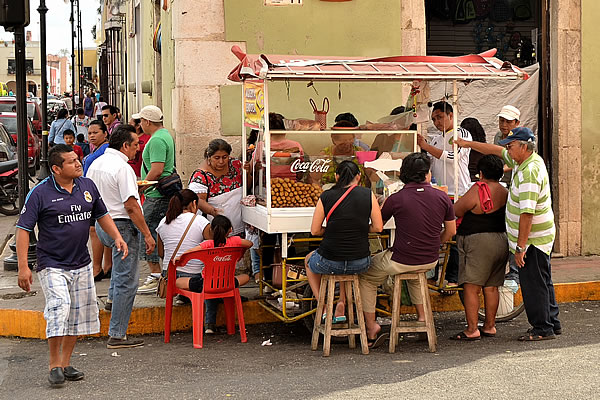 |
|
Street food stall in Valladolid |
|
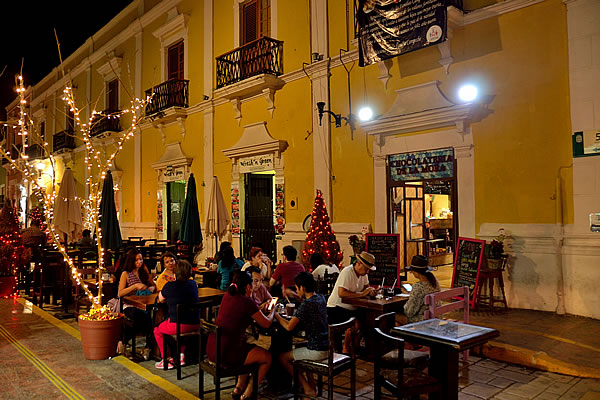 |
|
Al Fresco dining in Campeche |
|
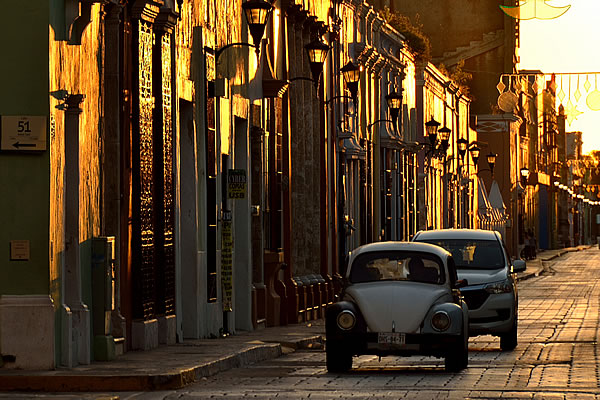 |
|
Night falls over Campeche's kolonial city centre |
|